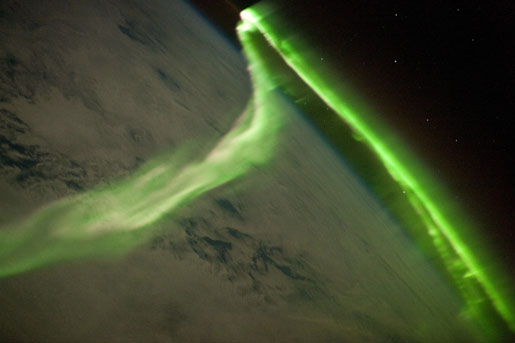Ask NASA Climate | June 20, 2010, 17:00 PDT
Pick of the pics
Those lucky astronauts

Astronaut photograph ISS023-E-58455, courtesy of the ISS Crew Earth Observations experiment and Image Science & Analysis Laboratory, Johnson Space Center.
Astronauts are lucky things. Apart from the whole being-in-space thing, they get to see sights like this one, taken from the International Space Station (ISS), on May 29, 2010. It shows the Aurora Australis, or Southern Lights — mesmerizing, ever-changing displays of light that appear in the Antarctic skies in winter.
The Southern Lights and Northern Lights (Aurora Borealis) are a by-product of the way the solar wind — a stream of electrons and protons coming from the Sun — collides with gases in the upper atmosphere. These shifting displays of colored ribbons, curtains, rays, and spots are produced by atoms, molecules and ions that have been excited by energetic charged particles travelling along magnetic field lines into the Earth's upper atmosphere.
This particular shot of the Aurora Australis was taken during a geomagnetic storm that was most likely caused by a coronal mass ejection from the Sun on May 24, 2010.
Image taken and caption adapted from the NASA's Earth Observatory.
